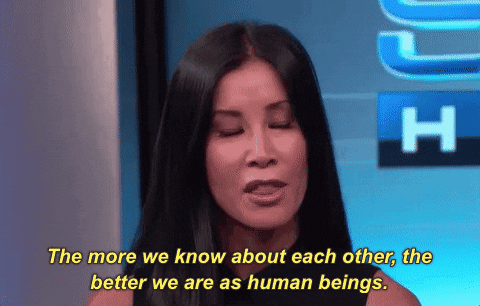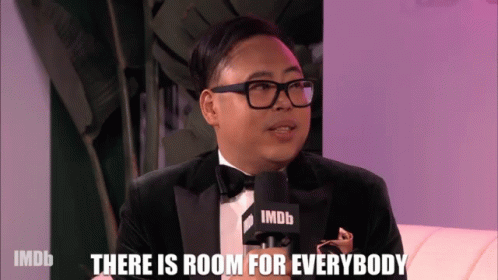A common debate about campus cultural centers is whether they are inclusive or exclusive.
That debate stems from a misunderstanding of what cultural centers are meant to do. But rather than seeing cultural centers as insular entities, it’s helpful to view them as tools that can link people together and encourage collaboration.
Cultural centers have highly specific missions and visions that revolve around honoring and embracing the histories, lives, and experiences of certain groups.
Cultural centers can easily work with individuals and groups to find intersections that are useful for collaboration while maintaining their overarching goals. For instance, a Black cultural center might have a mission and vision that relates to educating individuals about the African diaspora, while an LGBTQIA+ center’s vision might relate to educating individuals about the LGBTQIA+ population past and present.
The missions of these two cultural centers target specific populations, which allow them to look for shared connections. Yet, the specificity of the missions and visions ensure that ideals will not be compromised or ignored — as they might within general campus programming.
Cultural centers can facilitate connections between faculty, students, student organizations, and staff.
When I was the director of the African American Cultural Center at Austin Peay State University, my team and I created connections that sparked change and growth throughout campus. Below, I will provide six tips, learned from my experience, which you can use to create and maintain collaborations with cultural student centers.
1. Co-program with other centers
If your institution has multiple cultural centers, you can look for common interests in order to create programs that emphasize both identities.
Be creative to expose students to new experiences and demographics. I’ve done this by asking students who frequent one cultural center what they know about other cultural centers. If you notice that students are unaware of a particular cultural center, arrange for a partnership.

For example, a cultural center centered around race or ethnicity could collaborate with a military student center to highlight veterans of color and the challenges they face.
This would allow them to address a wide range of topics, such as the desegregation of the U.S military in 1948 and the Tuskegee Airmen, as well as African Americans, Native Americans, and Asian Americans, and other marginalized populations who have served in the military.
2. Collaborate with faculty
Invite faculty to tailor their expertise into a program that fits the cultural center model. This will especially be great for faculty members who are looking to connect to the campus culture or to add to their tenure dossier in a unique way,
Some professionals speak of a divide between academic affairs and student affairs. However, that divide doesn’t have to exist. By working together, cultural centers can create clear learning outcomes that can be tested for assessment. Plus, faculty will have an opportunity to interact with students outside of the classroom, encourage students to take their courses, and explore topics that can be incorporated into their teaching.
For example, faculty who have knowledge of LGBTQIA+, African American or Latinx studies could work with cultural centers to host a program about the Stonewall Uprising. This allows the faculty member to spotlight the often-ignored role that LGBTQIA+ (especially transgender) people of color played in the movement. They could also compare and contrast the LGBTQIA+ movement with other civil rights movements.
Cultural center partnerships show how history, political science, philosophy, and other academic fields can extend beyond the classroom. By making faculty a constant presence in my African American Cultural Center, my team and I helped create a culture of learning everywhere on campus.
3. Partner with student groups
Just as there can be a disconnect between student affairs and academic affairs, there can also be a disconnect between professionals and students. But, when cultural center staff work with students, they showcase a desire to put on events that students want.
Cultural centers can work with student groups that promote activism, politics, voting, or social justice and bring people together to exchange ideas. The cultural center can then be a space for a voting drive or to collaborate to put that activism into place. In this way, cultural centers can be utilized for both theoretical discussions and practical actions.

During my cultural center experience, I worked with many student organizations, including the campus chapter of the NAACP, the Feminist Majority Leadership Alliancessociation, and an empowerment group for women of color.
If you run a center or advise a student group, you should frequently encourage student groups to approach directors of cultural centers with programming ideas and to take ownership of that program.
Cultural center staff must empower students to pitch ideas and visions for new programs. The effectiveness of cultural centers relies on offering programs that appeal to the students.
To focus their pitches, we ask students to provide a breakdown of costs and to tell us how their program would appeal to a large group and various intersections of identity.
In order to get the best out of your connection with student groups, it is imperative that students know they have a lot of creative power and control. The more invested students are in the program, the more they become partners, rather than mere observers of your process.
4. Program to break stigmas and apprehension
Many students may be unaware of your campus’ amazing services, or afraid to utilize certain offices due to preconceived notions associated with them.
Fortunately, programming can help more students learn about such services. For example, collaborating with disability services can help you engage in vital campus conversations, such as ableism and accessibility. Programming can also educate participants on a range of disabilities and how students operate in the world, including on-campus, with those disabilities.
You could also partner with your student health or counseling center for workshops on sexual health, consent, and related topics.
Our cultural center worked closely with student health and counseling to provide free, confidential STI testing. This partnership helped us reach students who were more comfortable entering a cultural center than the health center.

A clever partnership can also help you address how identity affects mental health. Cultural centers can bring specific populations together to discuss aspects of their mental health that might be different than the general population.
Our cultural center held programs with our counseling center to discuss the mental health of black men and black women. Not only were we able to attract students within that demographic, but we were also able to reach out to other demographics so that they could practice empathy and understand the plight of students with identities different from their own.
5. Bridge the gap with administration
Encourage administrators, especially those who set institutional policies, to utilize the cultural center space. Presidents, vice presidents, provosts, and deans can hold town hall meetings in cultural student centers and invite every student.
When students of a particular demographic are directly affected by issues or policies, I recommend utilizing cultural centers to hold small group meetings. Such meetings allow students to voice their opinions and be heard, while administrators can showcase their desires to empathize with students.
For example, if an issue occurs on campus that involves racism, an administrator can hold discussions centered around particular identity groups in a cultural center.
Utilizing cultural centers can help to show that the administrator is taking the situation seriously and that they’re willing to meet students where they are to listen, rather than speak. Additionally, students may feel more at ease at a cultural center than in an administrative building that they’ve never been to before.
6. Reach out to students with off-campus responsibilities
Students who commute, attend your institution part-time, have families, participate in athletics, or have other off-campus responsibilities sometimes lack opportunities to participate in campus activities.
As student affairs professionals, it’s imperative that we directly target groups who might otherwise feel isolated or ignored and provide a space for belonging. Fortunately, cultural centers can help!
For example, A Black cultural center can partner with athletic programs to discuss the role that black athletes have in NCAA institutions. A great deal of controversy has arisen related to the cost of athletics, black graduation rates, the lack of payment for athletes, and the exploitation of athletes.
Often the conversation occurs without the input or opinions of student-athletes. So, you should host programs that allow them to share their perspectives and experiences with faculty, staff, administrators, and other students.
During my first year directing a cultural center, we held programming related to Colin Kaepernick kneeling during the national anthem, and we specifically encouraged student-athletes to attend. We also held a program about whether certain student-athletes deserve to be paid, during which we discussed the busy schedules of student-athletes, the inequity between sports administrators and athletes, and racial issues that may prevent student-athletes from being paid.
You need to view cultural centers as the valuable assets that they are. Cultural centers can bring people together, pose difficult questions, and empower the campus community.

Student affairs professionals need to take the lead and embrace the power of connection and collaboration that can help cultural centers to serve as catalysts for substantive change in higher education.
How have you utilized cultural centers on campus? What collaborative partnerships are you most proud of? Let us know on Twitter @themoderncampus or @MarceliusB.





